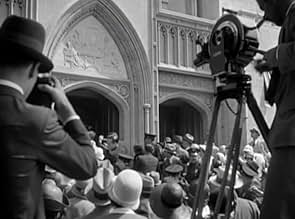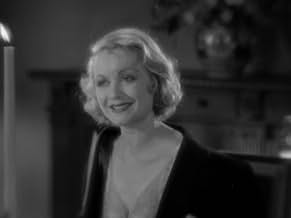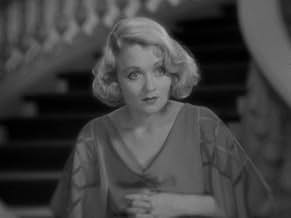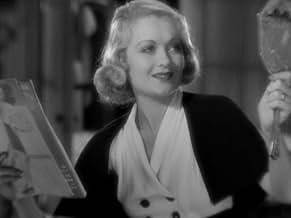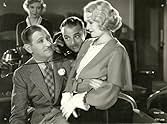IMDb रेटिंग
7.0/10
2.8 हज़ार
आपकी रेटिंग
अपनी भाषा में प्लॉट जोड़ेंThe career of a waitress takes off when she meets an amiable drunken Hollywood director.The career of a waitress takes off when she meets an amiable drunken Hollywood director.The career of a waitress takes off when she meets an amiable drunken Hollywood director.
- 1 ऑस्कर के लिए नामांकित
- 3 जीत और कुल 1 नामांकन
George Reed
- Undetermined Secondary Role
- (काटे गए सीन)
Alice Adair
- Undetermined Secondary Role
- (बिना क्रेडिट के)
Eddie 'Rochester' Anderson
- James - Max's Butler
- (बिना क्रेडिट के)
Sam Armstrong
- Undetermined Secondary Role
- (बिना क्रेडिट के)
Zeena Baer
- Secretary to Julius Saxe
- (बिना क्रेडिट के)
King Baggot
- Department Head
- (बिना क्रेडिट के)
Gerald Barry
- John Reed - an Actor
- (बिना क्रेडिट के)
Floyd Bell
- Undetermined Secondary Role
- (बिना क्रेडिट के)
Veda Buckland
- Nana - Jackie's Nursemaid
- (बिना क्रेडिट के)
Nicholas Caruso
- Chef at Brown Derby
- (बिना क्रेडिट के)
Lita Chevret
- Actress Filming on Movie Set
- (बिना क्रेडिट के)
फ़ीचर्ड समीक्षाएं
One of George Cukor's earliest successes before his glory years at MGM was this classic What Price Hollywood. Done at RKO it's the story of three star crossed people and that's literal for one of them.
Constance Bennett plays Mary Evans who is discovered by drunken director Lowell Sherman while working as a waitress at the famous Brown Derby in Hollywood. In 1932 that was the place to be if one wanted to be discovered because all the Hollywood celebrities dined there at one time or another. Including those like Sherman who liked their cuisine strictly liquid and at that time illegal.
You might think that playing a movie star was no stretch for Connie Bennett. But she and her sisters Joan and Barbara were of a distinguished theatrical family with father Richard Bennett in Hollywood himself at that time. She was as far removed from Mary Evans in real life as you can get, still Bennett got deep inside the part.
Sherman might have modeled his character on any number of distinguished Hollywood lushes. He probably took bits from all of them, but his director is uniquely his own, at once self centered, talented, vain and frail.
The third part of this triangle is Neil Hamilton, polo playing scion of a prominent society family who is introduced to Bennett when he smacks her with a polo ball. It was definitely love at first sight, but love between them takes a rocky road.
Hollywood has never been easy on itself. The movie industry figures that the scandals they've had are all too public so honesty is probably the best policy. In the sound era What Price Hollywood is one of the first of a long line of critical examination of the movie industry that also includes The Big Knife, The Bad And The Beautiful, Callaway Went Thataway and Two Weeks In Another Town. And of course we can't forget A Star Is Born in its original and remakes.
What Price Hollywood got an Oscar nomination for Best Original Screenplay. As its done before the Code, it holds up well today as a mark of distinguished and mature film making.
Constance Bennett plays Mary Evans who is discovered by drunken director Lowell Sherman while working as a waitress at the famous Brown Derby in Hollywood. In 1932 that was the place to be if one wanted to be discovered because all the Hollywood celebrities dined there at one time or another. Including those like Sherman who liked their cuisine strictly liquid and at that time illegal.
You might think that playing a movie star was no stretch for Connie Bennett. But she and her sisters Joan and Barbara were of a distinguished theatrical family with father Richard Bennett in Hollywood himself at that time. She was as far removed from Mary Evans in real life as you can get, still Bennett got deep inside the part.
Sherman might have modeled his character on any number of distinguished Hollywood lushes. He probably took bits from all of them, but his director is uniquely his own, at once self centered, talented, vain and frail.
The third part of this triangle is Neil Hamilton, polo playing scion of a prominent society family who is introduced to Bennett when he smacks her with a polo ball. It was definitely love at first sight, but love between them takes a rocky road.
Hollywood has never been easy on itself. The movie industry figures that the scandals they've had are all too public so honesty is probably the best policy. In the sound era What Price Hollywood is one of the first of a long line of critical examination of the movie industry that also includes The Big Knife, The Bad And The Beautiful, Callaway Went Thataway and Two Weeks In Another Town. And of course we can't forget A Star Is Born in its original and remakes.
What Price Hollywood got an Oscar nomination for Best Original Screenplay. As its done before the Code, it holds up well today as a mark of distinguished and mature film making.
Another film that deserves a wider viewership and a DVD release, "What Price Hollywood?" looks at the toll Hollywood takes on the people who make it possible.
Adela Rogers St John wrote the Oscar-nominated story of a fading genius of a director, destroyed by drink, who launches one last discovery into the world. Lowell Sherman, himself both a director and an alcoholic, played the sad role that had been modeled, in part, on his own life. (Sherman's brother-in-law, John Barrymore, was also a model, as was the silent film director Marshall Neilan.) The divinely beautiful Constance Bennett plays the ambitious Brown Derby waitress who grabs her chance. Neil Hamilton, paired to great effect with Bennett that same year in "Two Against the World," plays the east-coast polo-playing millionaire who captures Bennett's heart without ever understanding her world.
George Cukor directed the film for RKO, and already the seeds of his directorial genius can be seen. Wonderful montages and double exposures chart Bennett's rise and fall as "America's Pal," and I've rarely seen anything as moving as the way Cukor presented Sherman's death scene, using quick shot editing, exaggerated sound effects and a slow motion shot. As startling as it looks today, one can only imagine the reaction it must have caused over 70 years earlier, before audiences had become accustomed to such techniques.
While the romantic leads are solid--Bennett, as always, especially so--and Gregory Ratoff is mesmerizing as the producer, hats must be doffed to Lowell Sherman for his Oscar-calibre performance. The slide from charming drunk to dissolute bum is presented warts and all, and a late scene in which the director examines his drink-ravaged face in the mirror is powerful indeed. It's hard to imagine what it must have been like for Sherman to play such a role and it was, in fact, one of the last roles he took for the screen, before concentrating on directing--then dying two years later of pneumonia.
When David O. Selznick made "A Star is Born" for United Artists five years later, four years after leaving RKO, the RKO lawyers prepared a point-by-point comparison of the stories, recommending a plagiarism suit--which was never filed. The later movie never credited Adela Rogers St John or any of the source material of "What Price Hollywood?" for its own screenplay, which was written by Dorothy Parker from, supposedly, an idea of Selznick's.
"What Price Hollywood?" is a great source for behind-the-scenes tidbits--Cukor fills the screen with images of on-set action (or inaction), with various crew waiting about as they watch the film-in-a-film action being filmed. This movie works as history and as innovation, but it also works on the most important level, as a well-told story.
Adela Rogers St John wrote the Oscar-nominated story of a fading genius of a director, destroyed by drink, who launches one last discovery into the world. Lowell Sherman, himself both a director and an alcoholic, played the sad role that had been modeled, in part, on his own life. (Sherman's brother-in-law, John Barrymore, was also a model, as was the silent film director Marshall Neilan.) The divinely beautiful Constance Bennett plays the ambitious Brown Derby waitress who grabs her chance. Neil Hamilton, paired to great effect with Bennett that same year in "Two Against the World," plays the east-coast polo-playing millionaire who captures Bennett's heart without ever understanding her world.
George Cukor directed the film for RKO, and already the seeds of his directorial genius can be seen. Wonderful montages and double exposures chart Bennett's rise and fall as "America's Pal," and I've rarely seen anything as moving as the way Cukor presented Sherman's death scene, using quick shot editing, exaggerated sound effects and a slow motion shot. As startling as it looks today, one can only imagine the reaction it must have caused over 70 years earlier, before audiences had become accustomed to such techniques.
While the romantic leads are solid--Bennett, as always, especially so--and Gregory Ratoff is mesmerizing as the producer, hats must be doffed to Lowell Sherman for his Oscar-calibre performance. The slide from charming drunk to dissolute bum is presented warts and all, and a late scene in which the director examines his drink-ravaged face in the mirror is powerful indeed. It's hard to imagine what it must have been like for Sherman to play such a role and it was, in fact, one of the last roles he took for the screen, before concentrating on directing--then dying two years later of pneumonia.
When David O. Selznick made "A Star is Born" for United Artists five years later, four years after leaving RKO, the RKO lawyers prepared a point-by-point comparison of the stories, recommending a plagiarism suit--which was never filed. The later movie never credited Adela Rogers St John or any of the source material of "What Price Hollywood?" for its own screenplay, which was written by Dorothy Parker from, supposedly, an idea of Selznick's.
"What Price Hollywood?" is a great source for behind-the-scenes tidbits--Cukor fills the screen with images of on-set action (or inaction), with various crew waiting about as they watch the film-in-a-film action being filmed. This movie works as history and as innovation, but it also works on the most important level, as a well-told story.
One of George Cukor's better films, featuring Lowell Sherman, as an alcoholic director, Gregory Ratoff as a Sam Goldwyn like producer, and Constance Bennett playing the starstruck waitress at the Brown Derby. The film also includes Eddie "Rochester" Anderson as Sherman's sly butler. An early RKO film, it shows the working of the studio, somewhat satirically but lovingly. Also, a world premiere at Grauman's Chinese Theater. It should be better known .
The direction of George Cukor for this film is excellent. The three lead characters have three charming, yet completely different personalities. The great talent of George Cukor doesn't allow the energy of any of his characters to wane. The performance of Lowell Sherman only adds to the wonderful script, and only the innocence of Constance Bennett is able to carry the role of an aspiring starlet that makes it so believable. Neil Hamilton (later to play the 'Commissioner' on the "Batman" TV series of the mid-1960's) is excellent as the 'love interest'. But it is Lowell Sherman who steals nearly every scene in the wonderful jewel of a film. The story of this film is like many real-life stories of almost everyone who has ever worked in Hollywood - either in front of the camera or behind the lens. To me, this IS the original "A Star is Born", and that is why it is one of my favorite films of all time. From the appearance of Eddie "Rochester" Anderson to the Brown Derby to the scenes of the night life of the early days of Hollywood, "What Price Hollywood?" will always be a memorable film for me.
It's fun to compare "What Price Hollywood," made in 1932, to the more familiar 1937 version of "A Star is Born" (as well as its two later remakes). An important historic event intervened between the two: the Hays Code became rigidly enforced in 1934. The 1932 version is much spicier. Mary, the unknown knockout in in the 1932 version, is a saucy waitress at the legendary Brown Derby restaurant trying to catch the eye of a movie big shot. She's pretty sophisticated and, you believe, would happily do whatever is required to land an acting job. She readily allows herself to be picked up and taken to a premiere by a famous (but fading) director, which launches her great career. In the 1937 version, Esther, the ingenue, is straight off the farm and comes to Hollywood without a clue about the movie biz. She's a goody-two-shoes who would be shocked about what it usually takes to break into the biz. She catches the eye of a famous (but fading and highly alcoholic) actor when she waitresses at a party.
There is one major plot difference: in the 1932 version, Mary marries a rich polo playing socialite who divorces her (while she's pregnant) because he is fed up with movie people. This is highly realistic--movie stars had terrible marital problems. In the 1937 version, Esther marries the actor who was her mentor and is sucked into his hopeless downward spiral. Divorce is a perfectly acceptable solution to marital problems in 1932 but, under the constraints of the Code, was out of the question in 1937.
Both films are well worth seeing. They're loaded with insights about Hollywood and filmmaking (both the creative and the business end), the rapacious movie press, and the fans--an insatiable monster that devours the object of its affection. The declining fortunes of the director (in "What Price Hollywood") and the actor (in "A Star is Born") are quite fascinating. But of the two--the 1932 version is a lot more fun.
There is one major plot difference: in the 1932 version, Mary marries a rich polo playing socialite who divorces her (while she's pregnant) because he is fed up with movie people. This is highly realistic--movie stars had terrible marital problems. In the 1937 version, Esther marries the actor who was her mentor and is sucked into his hopeless downward spiral. Divorce is a perfectly acceptable solution to marital problems in 1932 but, under the constraints of the Code, was out of the question in 1937.
Both films are well worth seeing. They're loaded with insights about Hollywood and filmmaking (both the creative and the business end), the rapacious movie press, and the fans--an insatiable monster that devours the object of its affection. The declining fortunes of the director (in "What Price Hollywood") and the actor (in "A Star is Born") are quite fascinating. But of the two--the 1932 version is a lot more fun.
क्या आपको पता है
- ट्रिवियाThis film bears such a striking resemblance to A Star Is Born (1937) that it is often considered "the original version" of that often remade classic. In fact, David O. Selznick, who produced both this film and Star is Born, was threatened with a lawsuit by this film's writers, claiming plagiarism.
- गूफ़When the screen shows a newspaper gossip column, part of an item relating a joke about a Jewish boy and a bird can be seen. Several months later, another gossip column shows the identical item.
- क्रेज़ी क्रेडिटThere is a "by" credit to Gene Fowler and Rowland Brown after the title shows, but there is also a "screenplay by" credit to Jane Murfin and Ben Markson, without leaving any clear explanation or context as to what "by" actually means. But the reality was that Fowler and Brown wrote the real screenplay, with Murfin and Markson providing the continuity.
- कनेक्शनFeatured in David O. Selznick: 'Your New Producer' (1935)
- साउंडट्रैकThree Little Words
(1930) (uncredited)
Music by Harry Ruby
Part of a medley played during the opening credits
टॉप पसंद
रेटिंग देने के लिए साइन-इन करें और वैयक्तिकृत सुझावों के लिए वॉचलिस्ट करें
- How long is What Price Hollywood??Alexa द्वारा संचालित
विवरण
- रिलीज़ की तारीख़
- कंट्री ऑफ़ ओरिजिन
- भाषाएं
- इस रूप में भी जाना जाता है
- Hollywood Madness
- फ़िल्माने की जगहें
- उत्पादन कंपनी
- IMDbPro पर और कंपनी क्रेडिट देखें
बॉक्स ऑफ़िस
- बजट
- $4,11,676(अनुमानित)
- चलने की अवधि1 घंटा 28 मिनट
- रंग
- पक्ष अनुपात
- 1.37 : 1
इस पेज में योगदान दें
किसी बदलाव का सुझाव दें या अनुपलब्ध कॉन्टेंट जोड़ें


